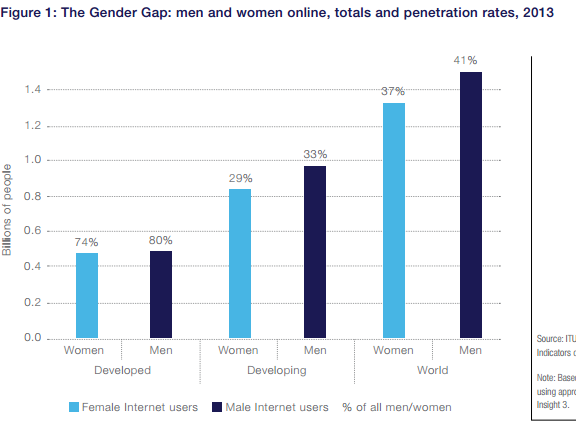It is time for phone makers – Apple, Samsung, Microsoft (Nokia) and telecom service providers (Airtel, Vodafone, Idea Cellular, Reliance Communications) to tap girls and generate $13 billion additional revenue, according to a report by ITU.
ITU says the missed mobile phone revenue opportunity is around $13 billion as women are 21 percent less likely to own a mobile phone – representing a mobile gender gap of 300 million.
The report says today’s untapped pool of female users could also represent a market opportunity for device makers, network operators, and software and app developers that might equal or even outstrip the impact of large emerging markets like China or India.
ITU is also worried about a growing gender gap in the mobile Internet usage. Its report says there are currently 200 million fewer women online than men, and warns that the gap could grow to 350 million within the next three years if action is not taken.
Women are coming online later and more slowly than men. Of the world’s 2.8 billion Internet users, 1.3 billion are women, compared with 1.5 billion men.
While the gap between male and female users is relatively small in OECD nations, it widens rapidly in the developing world, where expensive, ‘high status’ ICTs like computers are often reserved for use by men. In sub-Saharan Africa, for example, the report’s authors estimate that there are only half the number of women connected as men.
“Promoting women’s access to ICTs – and particularly broadband – should be central to the post-2015 global development agenda,” said Hamadoun I Toure, ITU Secretary General.
Iin developing countries, every 10 percent increase in access to broadband translates to a 1.38 percent growth in GDP. Bringing an additional 600 million women and girls online could boost global GDP by as much as $18 billion.
By 2015, it is estimated that 90 percent of formal employment across all sectors will require ICT skills. Professionals with computer science degrees can expect to earn salaries similar to doctors or lawyers – yet even in developed economies, women now account for fewer than 20 percent of ICT specialists.
Indian girls on mobile Internet
The global gender gap is estimated at 200 million fewer women online. In India, there are an estimated 60 million women and girls online, compared to 80 million male Internet users in mid-2013, according to Google.
80 million men divided by the total male population of India of 656 million gives a male Internet penetration rate of 12.2 percent; 60 million women of a total female population of India of 614 million gives a female penetration rate of 9.8 percent.
Closing the mobile gender gap and bringing 600 million more women online could increase global GDP by $13-18 billion. Connect To Learn (CTL) program has already equipped 10,000 students (especially girls) in schools in Brazil, Chile, China, Djibouti, Ghana, India, Malawi, Kenya, Senegal, South Sudan, Tanzania and Uganda17. In the Democratic Republic of Congo, IFDAP has trained women on Internet research so they can learn about diseases affecting their crops, improving yields.
Baburajan K
[email protected]






